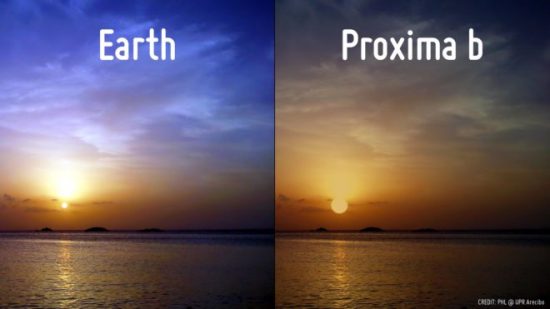June 28, 2018 – In my posting of a few days ago where I talked about the Fermi Paradox, the Drake Equation, and the latest speculation from researchers at Oxford University, where the latter concluded we may very well be the sole intelligent species in The Universe, one of my readers wrote back that the topic depressed him. In my reply I stated, if the Oxford researchers were right, then the stewardship of our planet becomes that much more important, and that the opportunity presented to us as the sole intelligence should inspire us to reach for the stars.
Getting our house in order here on Earth should be the first imperative. That means making sure the environment remains sustainable for our species and the remaining biodiversity that keeps the status quo. It means we must do better in balancing our technological civilization with the planet’s carrying capacity.
At the same time, the stars represent an opportunity too good to pass up. Spreading ourselves to other planets in our own local area, the Solar System, and then beyond to our nearest neighbouring stars would ensure the near immortality of humanity, an appropriate goal for the sole intelligence in the Universe as the Oxford researchers would have us believe.
So what would it take for us to become a multi-stellar species? Well, it means getting, first, to the nearest star with an exoplanet that is potentially inhabitable. That could be Proxima Centauri-b, 4.2 light-years away. Camille Beluffi and Frederic Marin, two French researchers, decided to take on a thought experiment, accompanied by a few algorithms, in which they imagined a spacecraft traveling from Earth to Proxima Centauri at the fastest speed we currently can produce with existing technology. At Apollo program top speed, 40,000 kilometers (25,000 miles) per hour, a trip to Proxima Centauri would take 100,000 years. But at robot spacecraft speed based on an upcoming launch of the Parker Solar Probe in August of this year, our current technology will attain speeds of more than 700,000 kilometers (420,000 miles) per hour. At that speed, a trip to Proxima Centauri-b would take 6,300 years.
What Beluffi and Marin wanted to understand was how we could sustain a human population in a spacecraft for a voyage of that duration using the technology on hand. How many could be sent on such a voyage knowing that survival will mean multi-generational breeding to complete the task? What would be the right ratio of men to women to ensure survival? What contingencies would be needed to deal with potential disasters like an accident, or disease outbreak? How could we avoid inbreeding?
The researchers looked at what successfully sustains a breeding population of animals here on Earth to ensure enough genetic diversity to thrive indefinitely without inbreeding. The number turns out to be 25 breeding pairs.
Applying their algorithms to the number led to the conclusion that 25 pairs would be too small and likely produce a 50% chance of population die-off before reaching Proxima Centauri-b. Instead, it was concluded that an ideal minimal breeding population would be 49 pairs to give us the best shot in making the 6,300-year voyage.
Nowhere in their evaluation did the authors of this thought experiment look beyond current technology as the means of getting from Earth to Proxima Centauri-b. There is no mention of humans traveling in a cryopreserved state for much of the trip as is often depicted in science fiction novels and films. Nor did they consider the possibility of assembling humans from detailed DNA specifications in databanks with robots making the voyage and printing out a human population along with a biodiverse supporting cast of other animals and plants upon arrival. In such a scenario, the robots would retain human knowledge and tend to the population of living things created until they could be self-sustaining in their new home.
Of course, all of this effort would go for naught if it turns out that the planets orbiting Proxima Centauri are not suitable Earth substitutes. We know very little about Proxima Centauri-b, other than it is a rocky planet with a mass slightly larger than Earth. It orbits its star at about half the distance from Earth’s orbit around the Sun. Proxima Centauri, being a red dwarf star, is less luminous than the Sun approximating 15% of the energy produced by our star. Taking these two aforementioned factors into consideration, exoplanet researchers hypothesize that water may exist in all three states on the planet’s surface as it does here on Earth. But before we start sending our seeds out to plant on Proxima Centauri-b, it behooves us to know more.
Beluffi and Marin’s thought experiment limited itself to what we have on hand now. So they didn’t consider Philip Lubin’s proposed faster method of propulsive technology using a photon beam to drive a spacecraft to speeds approaching one-quarter the speed of light. You can read more about this technology in a posting I wrote back in February of 2016.
Is what Lubin is proposing pure fantasy? Hardly, and he has suggested a test of the technology can easily be done in close proximity to Earth. Once proven he has proposed we do an interstellar voyage of discovery by sending send a small fleet of nano-spacecraft to Alpha Centauri, the binary star system which neighbours Proxima Centauri. That voyage would take 15 years.
Lubin acknowledges the limitation of his method of propulsion, noting it would have no braking mechanism, so couldn’t slow down. We would monitor the voyage throughout the 15 years, however, using laser communication technology which would send a continuous stream of data and images back to Earth. At the end of the fly by we would briefly glimpse the Alpha Centauri system before heading beyond.
But what if we used Lubin’s idea and made Proxima Centauri our target? And what if we devised a much larger spacecraft to be driven by this method of propulsion? Within it, we could include a payload to be ejected upon approaching Proxima Centauri. The payload would include its own onboard propulsion system to steer it to Proxima Centauri-b where it would have the capability to soft land.
And what could that payload contain? I would suggest robots capable of self-assembly and able to manufacture other robots and an infrastructure from the materials at hand on the planet’s surface. Once the infrastructure was built the DNA instructions kept on board would be the blueprint for the robots to manufacture our human presence along with companion biodiversity.
















